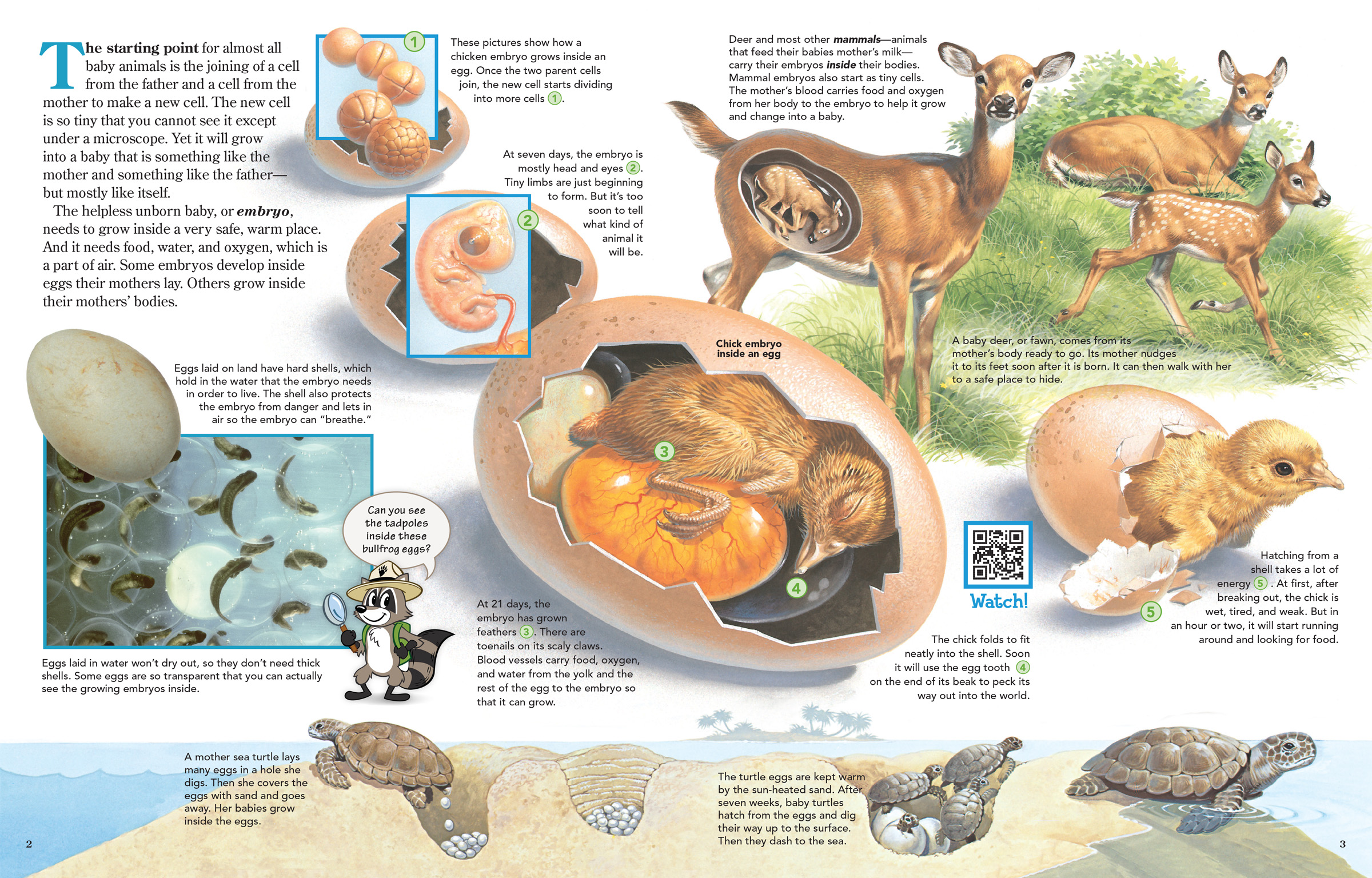
The Starting Point for Baby Animals
ByThe starting point for almost all baby animals is the joining of a cell from the father and a cell from the mother to make a new cell. The new cell is so tiny that you cannot see it except under a microscope. Yet it will grow into a baby that is something like the mother and something like the father—but mostly like itself.
The helpless unborn baby, or embryo, needs to grow inside a very safe, warm place. And it needs food, water, and oxygen, which is a part of air. Some embryos develop inside eggs their mothers lay. Others grow inside their mothers’ bodies.
These pictures show how a chicken embryo grows inside an egg. Once the two parent cells join, the new cell starts dividing into more cells.
At seven days, the embryo is mostly head and eyes. Tiny limbs are just beginning to form. But it’s too soon to tell what kind of animal it will be.
At 21 days, the embryo has grown feathers. There are toenails on its scaly claws. Blood vessels carry food, oxygen, and water from the yolk and the rest of the egg to the embryo so that it can grow.
Chick embryo inside an egg
The chick folds to fit neatly into the shell. Soon it will use the egg tooth on the end of its beak to peck its way out into the world.
Hatching from a shell takes a lot of energy. At first, after breaking out, the chick is wet, tired, and weak. But in an hour or two, it will start running around and looking for food.
Eggs laid on land have hard shells, which hold in the water that the embryo needs in order to live. The shell also protects the embryo from danger and lets in air so the embryo can “breathe.”
Eggs laid in water won’t dry out, so they don’t need thick shells. Some eggs are so transparent that you can actually see the growing embryos inside. Can you see the tadpoles inside these bullfrog eggs?
A mother sea turtle lays many eggs in a hole she digs. Then she covers the eggs with sand and goes away. Her babies grow inside the eggs.
The turtle eggs are kept warm by the sun-heated sand. After seven weeks, baby turtles hatch from the eggs and dig their way up to the surface. Then they dash to the sea.
Deer and most other mammals—animals that feed their babies mother’s milk—carry their embryos inside their bodies. Mammal embryos also start as tiny cells. The mother’s blood carries food and oxygen from her body to the embryo to help it grow and change into a baby.
A baby deer, or fawn, comes from its mother’s body ready to go. Its mother nudges it to its feet soon after it is born. It can then walk with her to a safe place to hide.

